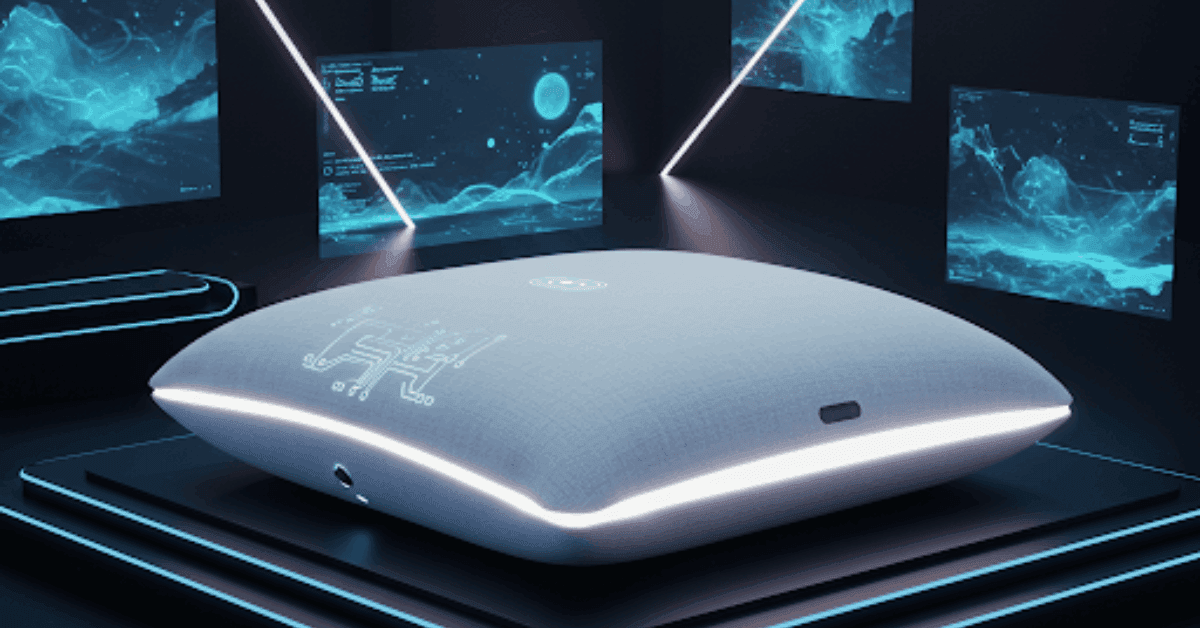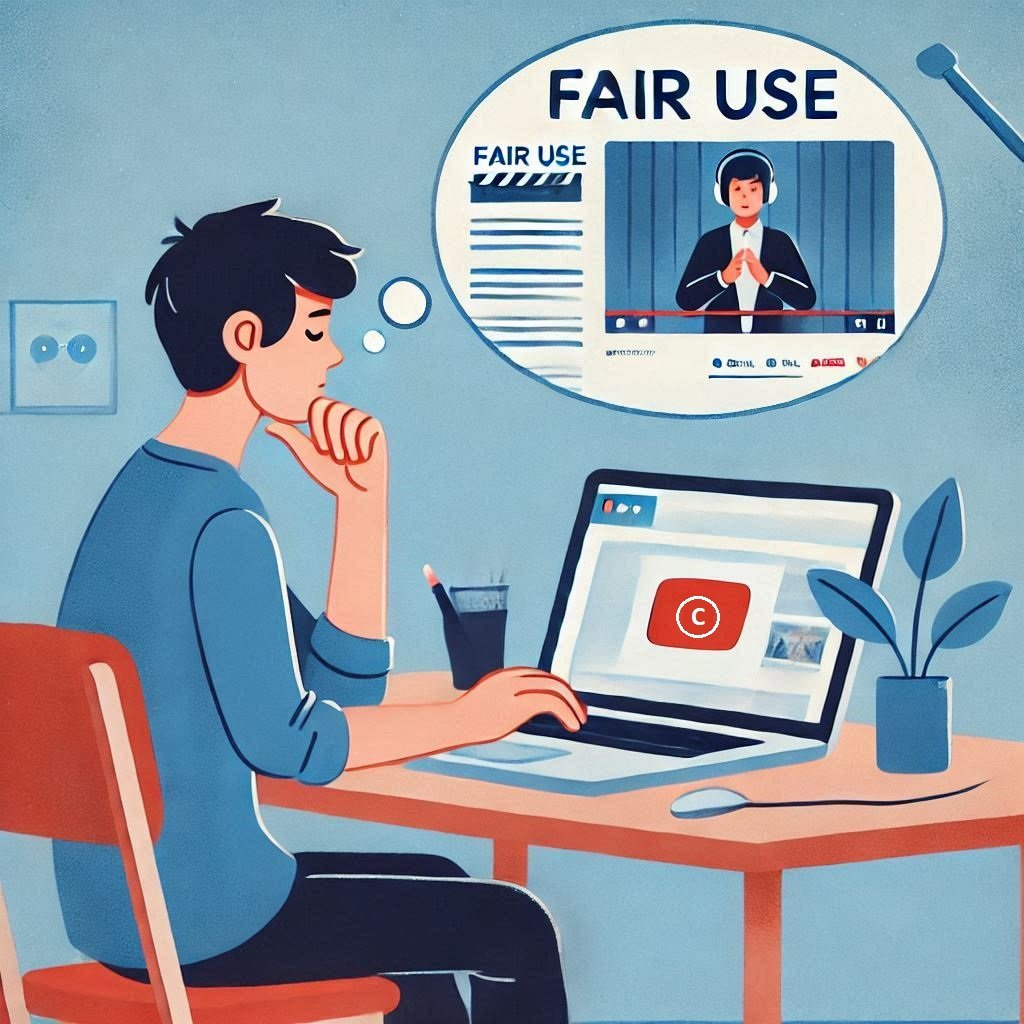Imagine being able to control your dreams and step into incredible virtual worlds while you sleep. The Virtual Reality Lucid Dream Pillow is a groundbreaking innovation that merges VR technology with lucid dreaming techniques, allowing you to explore immersive dreamscapes like never before.
But what makes this futuristic sleep device so special? How does it work, and what role do patents play in its development? Let’s discuss the details and uncover the magic behind this revolutionary product.
Understanding Lucid Dreams and Their Importance
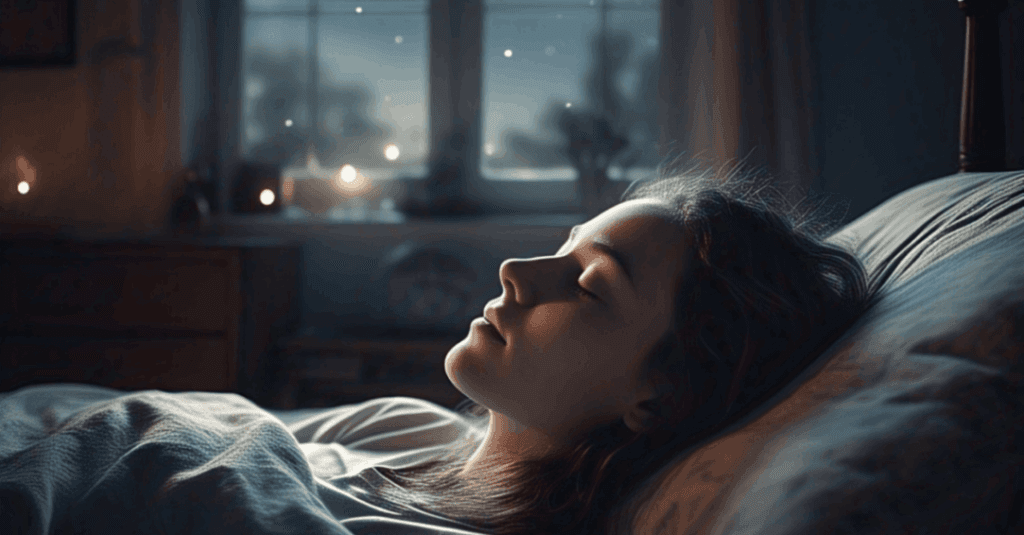
A lucid dream is a type of dream where you become aware that you’re dreaming while still asleep. This awareness allows you to control your actions, change the dream environment, and explore limitless possibilities—just like a virtual reality experience inside your mind.
For example, in a regular dream, you might be running from a monster. In a lucid dream, you could realize it’s just a dream and choose to turn the monster into a friendly character or teleport away.
Importance of Lucid Dreams
Lucid dreaming isn’t just fun; it has several practical benefits:
- Overcoming Nightmares – If you struggle with recurring nightmares, lucid dreaming can help you face your fears and change the outcome of scary dreams.
- Reducing Anxiety & Stress – Controlling your dreams can provide a sense of empowerment, reducing stress and anxiety in real life.
- Boosting Creativity – Many artists, writers, and inventors use lucid dreams to visualize new ideas and solve problems creatively.
- Improving Skills – Studies suggest that practicing skills in a lucid dream—like playing an instrument or a sport—can improve real-life performance.
- Enhancing Sleep Quality – While some people fear it might disturb sleep, many lucid dreamers report waking up refreshed and energized after a successful lucid dream.
With tools like lucid dream masks, VR Lucid Dream Pillows, and sleep tracking apps, achieving lucid dreams is becoming easier.
What is a Virtual Reality Lucid Dream Pillow?
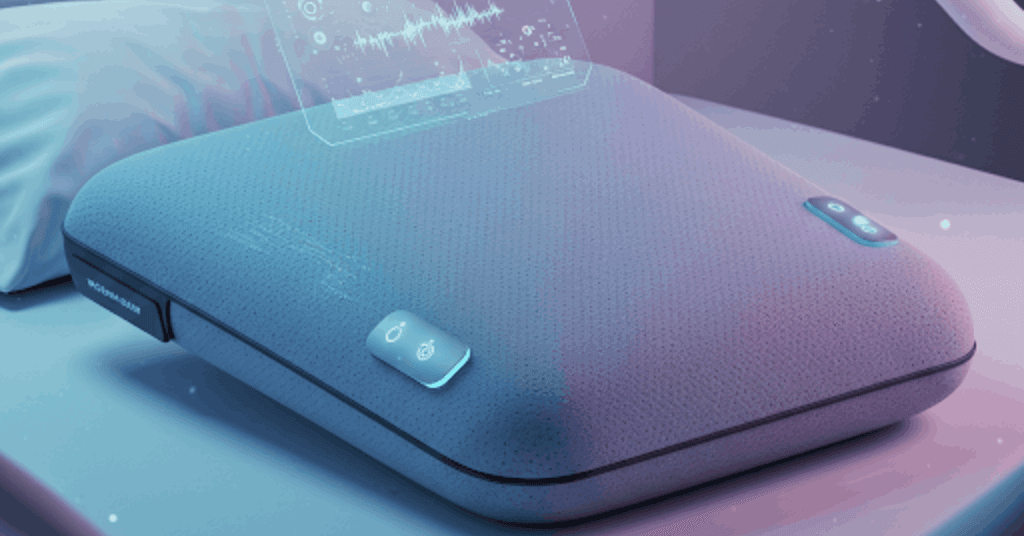
The Virtual Reality Lucid Dream Pillow is a high-tech sleep aid that helps you become aware and take control of your dreams. Unlike regular lucid dream masks or headbands, this device uses advanced VR technology, neurofeedback sensors, and sleep tracking to guide you into a lucid dream state more easily.
It works by improving dream visualization with haptic feedback (gentle vibrations), soft audio cues, and light stimulation. These features help your brain recognize when you’re dreaming, making it easier to explore and control your dream world.
With its cutting-edge sleep technology, the VR Lucid Dream Pillow takes lucid dreaming to the next level, offering a more immersive and interactive dream experience.
The Technology Behind the Lucid Dream Pillow
The Virtual Reality Lucid Dream Pillow is powered by several advanced technologies to help users experience and control their dreams:
- EEG Monitoring: This technology tracks brain activity to determine when the user enters REM sleep, which is when lucid dreaming is most likely to happen.
- VR Integration: Once REM sleep is detected, the pillow activates its VR system, guiding the user through immersive dreamscapes and interactive scenarios that enhance the lucid dreaming experience.
- Patents: Key patents, such as the lucid dream stimulator patent and the inducing lucid dreaming patent, are crucial in protecting the unique technology behind the pillow and ensuring its effectiveness.
How Does the Virtual Reality Lucid Dream Pillow Work?
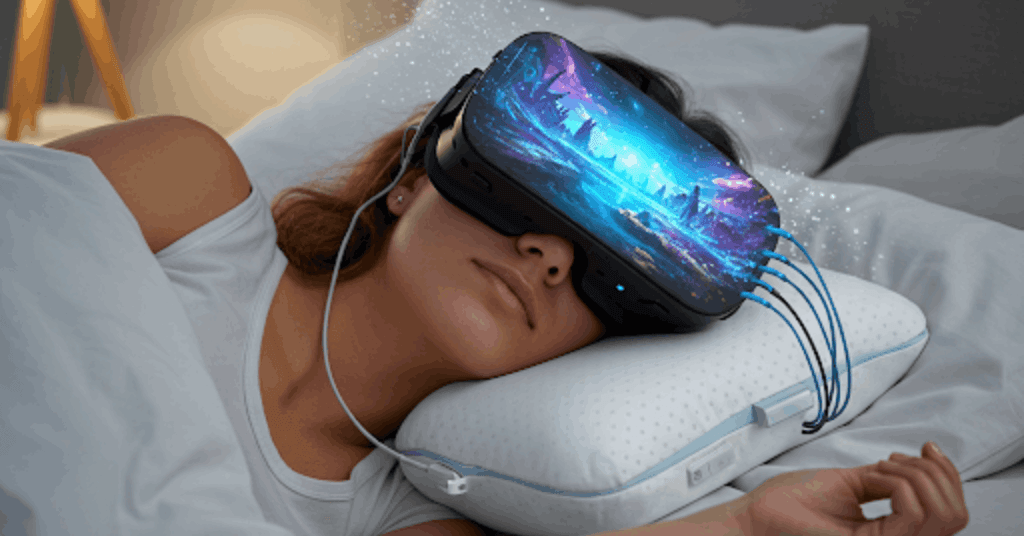
The Virtual Reality Lucid Dream Pillow is an amazing device that helps you take control of your dreams. Here’s how it works, explained in a simple way:
- Monitoring Brain Activity: The pillow keeps an eye on your brain waves to figure out when you’re in the REM (Rapid Eye Movement) sleep stage, which is the best time for dreaming.
- Binaural Beats and Guided Audio Cues: It plays special sounds called binaural beats and guided audio cues. These sounds help you become aware that you’re dreaming, making it easier to have lucid dreams.
- LED Light Flashes: The pillow uses LED light flashes that act as reality checks. These flashes remind you to check if you’re dreaming, helping you stay aware within your dreams.
- Vibration Feedback:The pillow also gives gentle vibrations to keep you aware while you’re dreaming. This helps you stay in control and not wake up too soon.
- AI-Driven Sleep Tracking:It has smart technology that tracks your sleep patterns using AI. This helps you remember your dreams better and improve your dream recall.
How It All Works Together
Once you enter REM sleep, the pillow’s smart technology sends subtle signals to your brain, like playing sounds, flashing lights, and vibrating gently.
These signals help you recognize that you’re dreaming. When you realize you’re in a dream, you can start controlling it and create your own dream adventures. It’s like experiencing virtual reality while you’re asleep.
Case Studies on Lucid Dreaming
Lucid Dreaming Training for PTSD
A case report published in Frontiers in Psychology discusses the story of a woman diagnosed with severe posttraumatic stress disorder (PTSD), suffering from recurrent nightmares. She participated in a six-week lucid dreaming training program, which significantly reduced her nightmare frequency and improved several psychological measures. This study highlights the importance of addressing sleep and nightmares in psychiatric treatment processes.
Lucid Dreaming as an Intervention for Nightmares
Another study published in Frontiers in Psychology evaluated the effectiveness of lucid dreaming therapy (LDT) in PTSD patients. About 80% of PTSD patients suffer from nightmares, causing major distress. Lucid dreaming was shown to be an effective strategy for coping with nightmares and positively impacted other sleep variables. This study suggests that learning techniques to regulate nightmares can help reduce anxiety and depression in PTSD patients.
Lucid Dreaming Treatment for Nightmares
A pilot study published in Psychotherapy and Psychosomatics investigated the effects of lucid dreaming treatment (LDT) on chronic nightmares. The study found that LDT was effective in reducing nightmare frequency, although the primary therapeutic component remained unclear. The study concluded that LDT could be a promising treatment for reducing nightmare frequency.
Key Features of the Virtual Reality Lucid Dream Pillow
- VR-Enhanced Dream Induction – Uses virtual reality techniques to simulate dreamscapes.
- Smart Sleep Monitoring – Tracks REM cycles to trigger lucid dream awareness.
- Customizable Dream Cues – Allows users to choose audio, light, and vibration settings.
- AI Dream Journal Integration – Automatically records dream experiences for better recall.
- Patented Sleep Technology – Utilizes exclusive patents for lucid dream enhancement.
Benefits of Using a Virtual Reality Lucid Dream Pillow
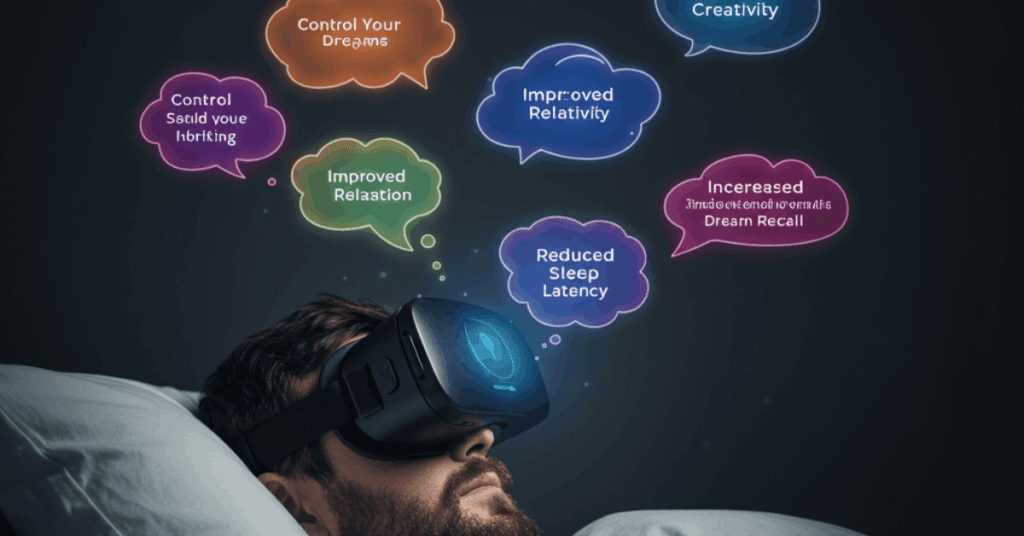
The Virtual Reality Lucid Dream Pillow is an exciting new technology that combines virtual reality with sleep science. Here are some of the main benefits:
Enhanced Creativity
Lucid dreaming allows you to explore imaginative scenarios, which can boost your creative thinking. The VR aspect makes these dreams more vivid and engaging, inspiring new ideas and solutions.
Improved Sleep Quality
By helping you achieve deeper and more restful sleep, the VR lucid dream pillow ensures you wake up feeling refreshed. It can also reduce nightmares, leading to better overall sleep.
Therapeutic Benefits
This pillow can be particularly useful for people with PTSD or anxiety. It provides a safe space to confront and manage fears, leading to reduced anxiety and improved mental health.
Stress Relief
Lucid dreaming can be a relaxing and enjoyable experience. The VR component enhances this by immersing you in calming and peaceful dreamscapes, helping to relieve stress.
Personal Growth
Exploring your subconscious mind through lucid dreaming can lead to personal insights and growth. The VR lucid dream pillow facilitates this journey, helping you understand yourself better.
Learning and Skill Development
Some people use lucid dreaming to practice skills or rehearse scenarios. The VR aspect makes these practice sessions more realistic, potentially leading to improved performance in real life.
Research and Development
Combining lucid dreaming with VR opens new possibilities for research in sleep technology and mental health. Ongoing advancements in this field could lead to even more exciting applications.
FAQs
The pillow uses EEG sensors, VR cues, and binaural beats to enhance dream awareness and help users take control of their dreams.
Yes, it uses non-invasive technology, soft memory foam, and adjustable settings to ensure a comfortable and safe sleep experience.
Results vary, but most users report increased dream recall and lucid dream occurrences within a few weeks of consistent use.
Yes, research shows that lucid dreaming therapy (LDT) can help reduce nightmare frequency and improve sleep quality for PTSD sufferers.
Currently, it’s available through select online retailers and crowdfunding campaigns. Be sure to check for patented versions to ensure authenticity.
Conclusion
The Virtual Reality Lucid Dream Pillow is changing the way we experience dreams. With its smart blend of patented sleep technology, VR simulations, and AI-driven dream enhancement, this pillow helps you take control of your dreams. Whether you’re looking to explore exciting dream worlds or control what happens in your dreams, this device is a game-changer. As VR and neuroscience keep advancing, the future of lucid dreaming is looking brighter and more exciting than ever.
Disclaimer: The information provided in this article is for informational purposes only and does not constitute medical or professional advice. Results from using the Virtual Reality Lucid Dream Pillow may vary. Consult a healthcare provider before using any sleep technology, especially if you have underlying health conditions..

